Teslas made in China versus the USA: What’s the difference? The ultimate Model 3 SR+ comparison test
It’s the top-selling electric car in the country, but in early 2021 the Tesla Model 3 underwent its biggest change since going on sale in Australia in 2019.
Instead of being sourced from the original Tesla factory in Fremont, California, the 2021 Model 3 was sent to Australia from the new Chinese Gigafactory in Shanghai.
While the cars look identical to those still made in America, there is one key difference: the batteries.
Chinese Model 3s use lithium-iron phosphate (or lithium ferro phosphate/LFP) batteries instead of the previous lithium nickel cobalt aluminium oxide (NCA) batteries.
UPDATED: Tesla Model 3 updated for November 2021: longer range but slower 0-100km/h time
WANT A TEST DRIVE? Rent one of the Teslas used in this test from Evee.com.au
FULL REVIEW: Tesla Model 3 Standard Range Plus
So, is it a big deal? And is the new Model 3 a step up or down on the one it replaces?

Strap yourself in for the ultimate Tesla showdown.
The Tesla contenders
The cars supplied to us for this test include one of the last of those made in America; the blue car is available to rent on Evee.com.au. Those cars scored the 2021 updates that included black highlights instead of chrome outside.
The blue Standard Range Plus (SR+) was manufactured in October 2020 and includes the updated interior (with dual wireless phone chargers and an additional strip on the top of the insides of the front doors).
Want the latest EV news and reviews delivered to your inbox? Subscribe to our weekly newsletter!
The white car is also a Standard Range Plus and was built in April 2021.
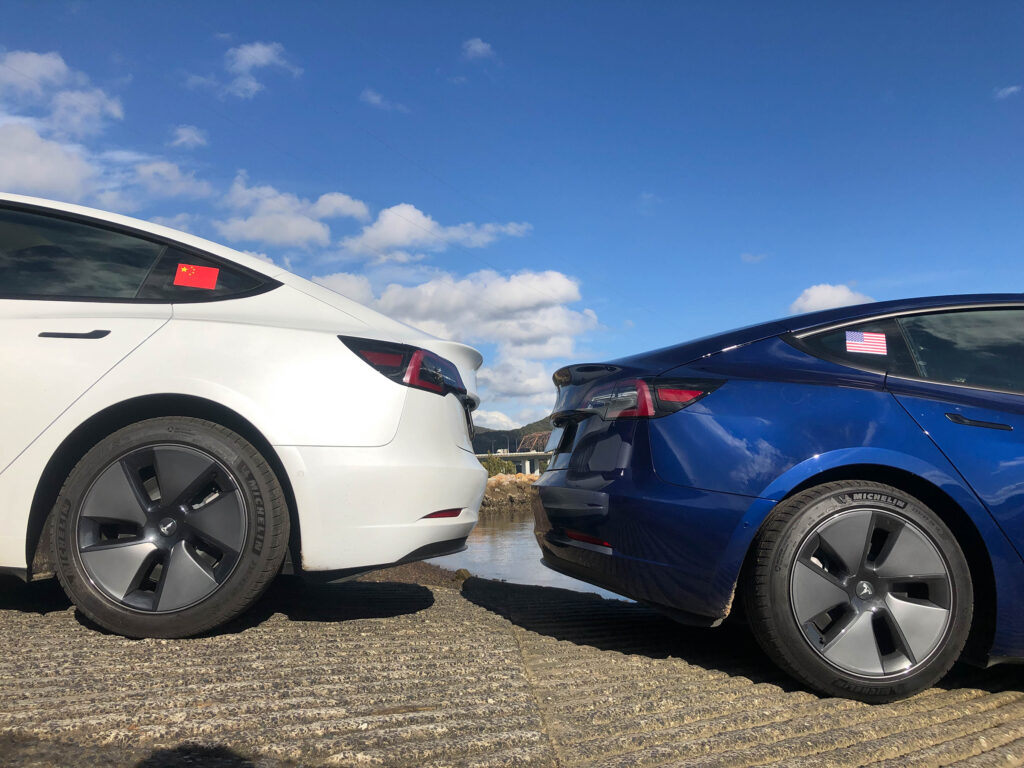
Six months between them and nothing to pick them apart other than the colour. We also added stickers denoting the country of origin, just to make it easier to pick which is which.
But a world of difference in the battery chemistry (more on that later), which has the potential to impact a range of factors.
The test
Our test involves a day of driving in the suburbs, freeways and country roads. We also managed time for some performance testing and stuck each car on vehicle scales to see how they differ.
Clearly we needed two drivers but those drivers swapped cars mid-way through the drive to account for different driving styles and weights.
That said, the cars drove in convoy. So, if one hit heavy traffic or got stuck at a set of lights, the other did, too.
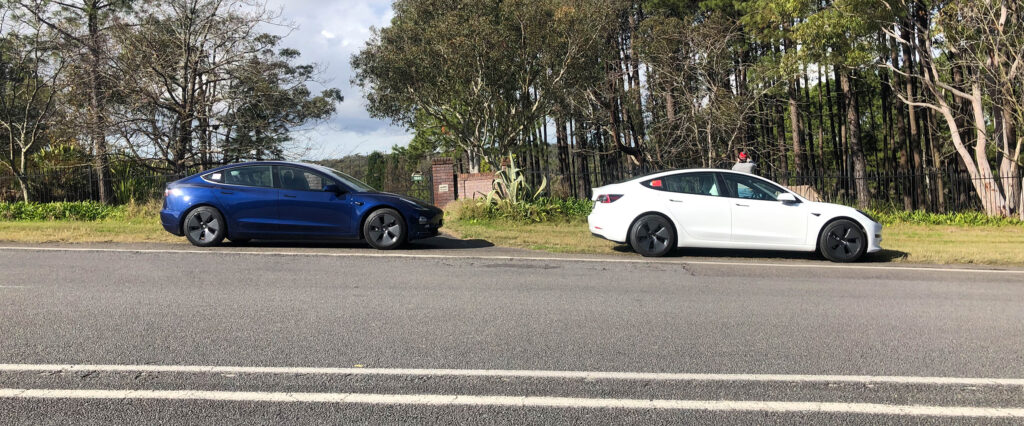
Air-conditioning settings and drive modes were aligned on both cars to eliminate discrepancies.
Tyre pressures were checked and set to the 42psi placard recommendation.
Each car also had a heat pump, the device added as part of the model update that makes heating the cabin more efficient. It’s another area where there is no difference between the cars.
Batteries: LFP v NCA
First, some details on the batteries.
Tesla essentially chose the LFP batteries for price. Lithium-iron phosphate batteries don’t use nickel and cobalt, two of the most expensive elements in most lithium-ion batteries.
The downside is they hold less electricity per kilogram of battery.
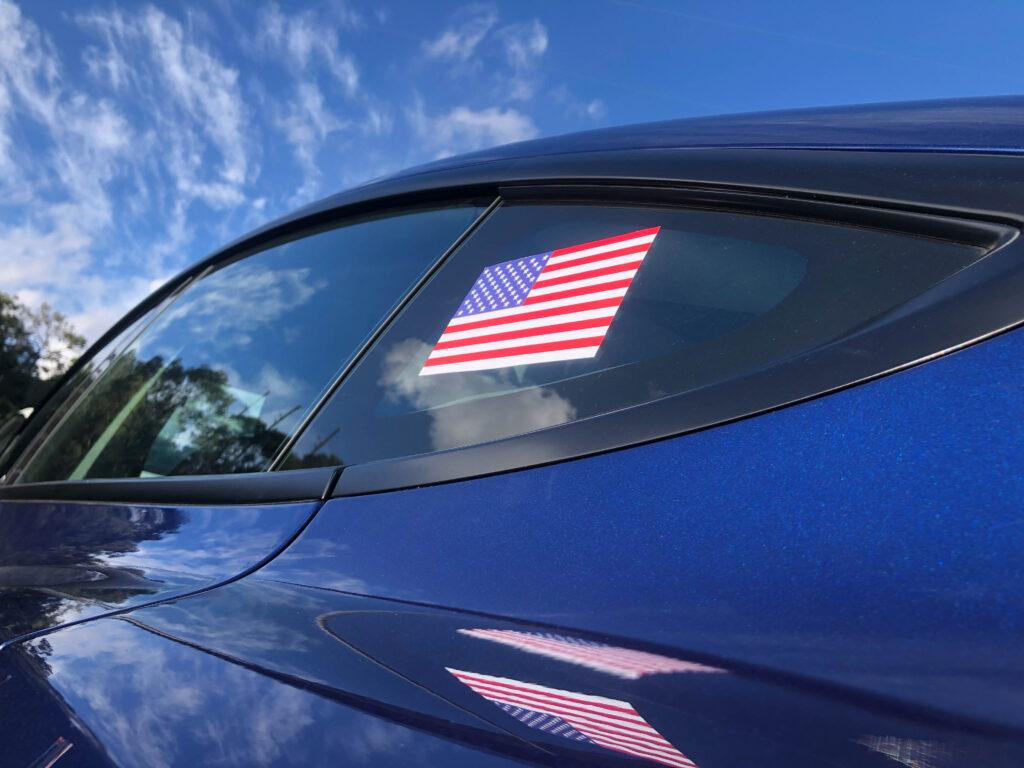
Tesla boss Elon Musk says there are plans to use more LFP batteries on the cheaper, lesser-range Teslas in future.
But adopting LFP batteries creates challenges elsewhere.
Weighty issue
In updating the Model 3 and choosing different batteries Tesla actually increased the claimed range of the Model 3.
Using the old NEDC measuring system (Tesla has since switched to a more realistic WLTP measurement, which lowers the range) the Model 3 stepped up from 460km to 508km – about 10 percent better.
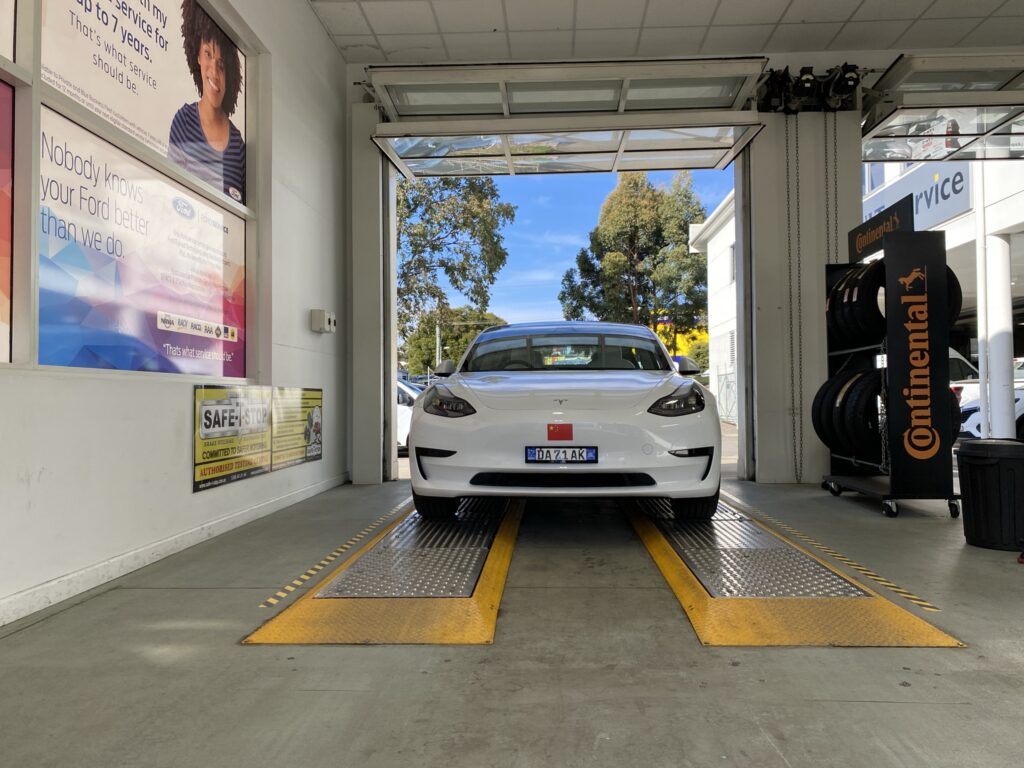
Granted, it wasn’t much, but considering the new batteries hold slightly less energy there were only two ways that could occur: Tesla either found amazing efficiency benefits elsewhere on the car or there are bigger batteries.
The heat pump improved efficiency, but that change also impacted the last of the American-sourced Model 3s.
We took our Model 3s to some car scales to learn more.
First up was the blue Model 3 American. It weighed a nuggety 1614kg.
But that was nothing compared with the white Model 3 China, which was 1733kg.
So, Tesla has added 119kg of weight to the Model 3, almost all of which is in the batteries (there could also be some in other components, such as suspension). That’s plenty of additional batteries.
We also individually weighed how much weight is pushing down on each wheel (see the graphic below).
Most of that weight – 86kg of it – was added to the front wheels, with the remaining 33kg over the rear-end.
That also marginally improved the front-rear weight ratio from 47%/53% with the old car to 48%/52% with the current car.
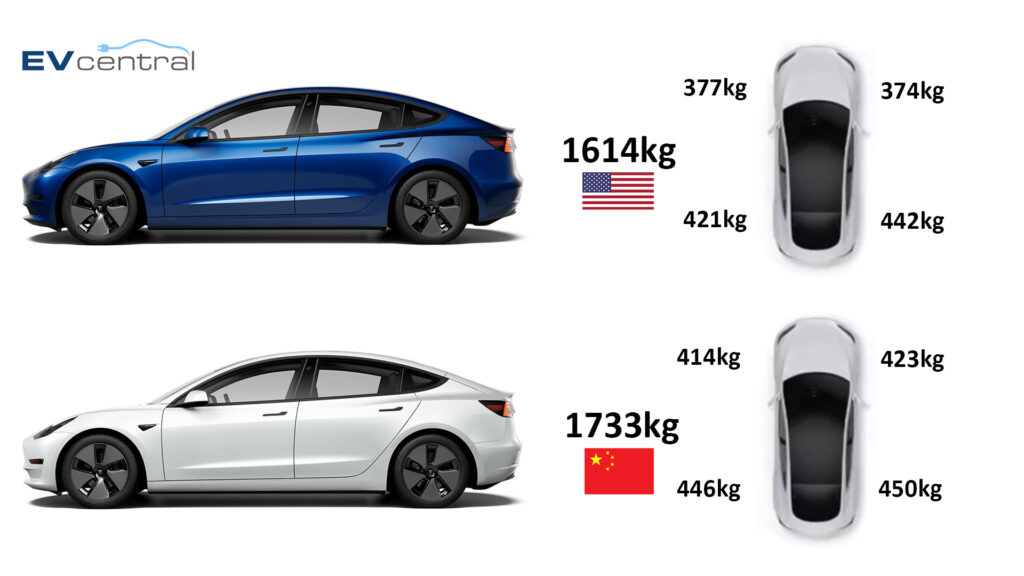
Up to speed
Adding 119kg to any car is going to take its toll on acceleration, all things being equal. Car makers often spend more effort on shaving kilos from a car rather than making the drivetrain produce more power.
But we wanted to quantify the difference, because on the road there is very little to separate them.
The official 0-100km/h claim for a Model 3 is 5.6 seconds. Interestingly that claim didn’t change since the arrival of the heavier Chinese-made model.
Our performance testing was conducted using a satellite-enabled VBox. Launch technique for both cars was the same: choose Standard drive mode, get the car to hold itself stationary and plant the throttle to the floor.
And the headline figure is… neither Model 3 got near the claimed 5.6 seconds for the 0-100km/h time. Somehow that wasn’t surprising. Tesla can be optimistic with claims and figures.
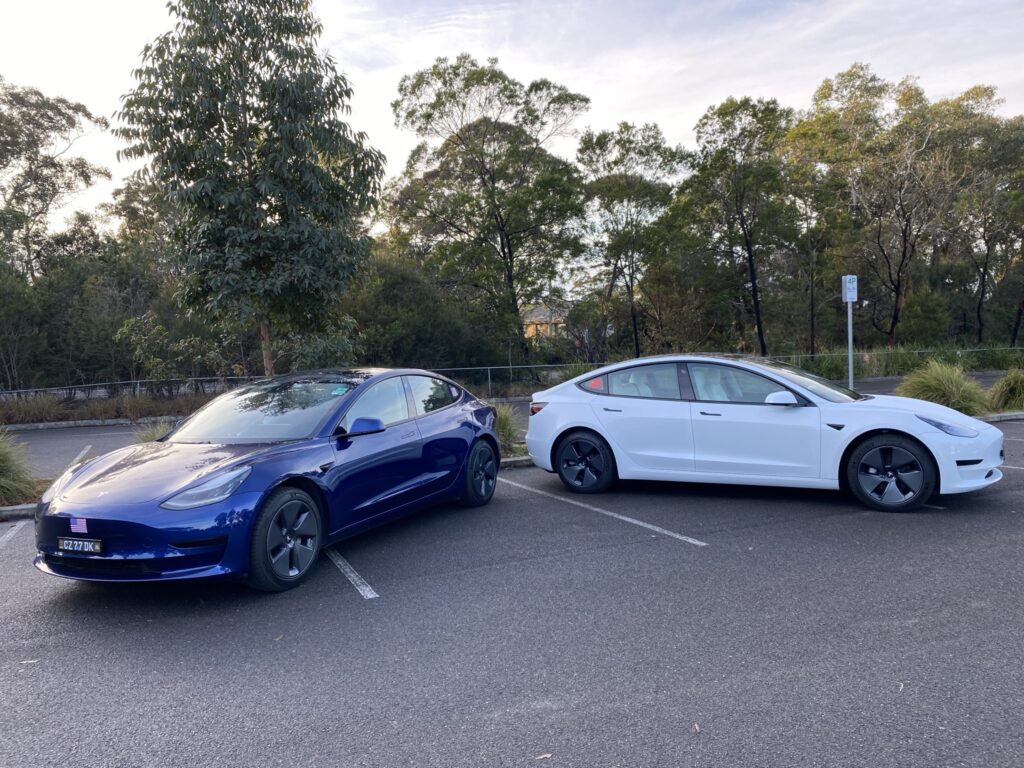
But at around six seconds, each is still brisk for what is an entry-level circa-$65K prestige sedan.
But here’s the surprise: the heavier Chinese-made car is actually quicker to 100km/h. Only just, but it is quicker. Each car got six runs and the best of those was 5.99 seconds for the white Model 3.
The best the US-built car could manage under identical testing conditions was 6.13 seconds. It was consistently one-to-two-tenths of a seconds slower to 100km/h across the six runs.
But this is where things get interesting. We then broke out acceleration at higher speeds and, once the cars are moving the blue America Model 3 was faster. Again, only just, but it was consistently quicker in the 60-100km/h sprint that is representative of overtaking.
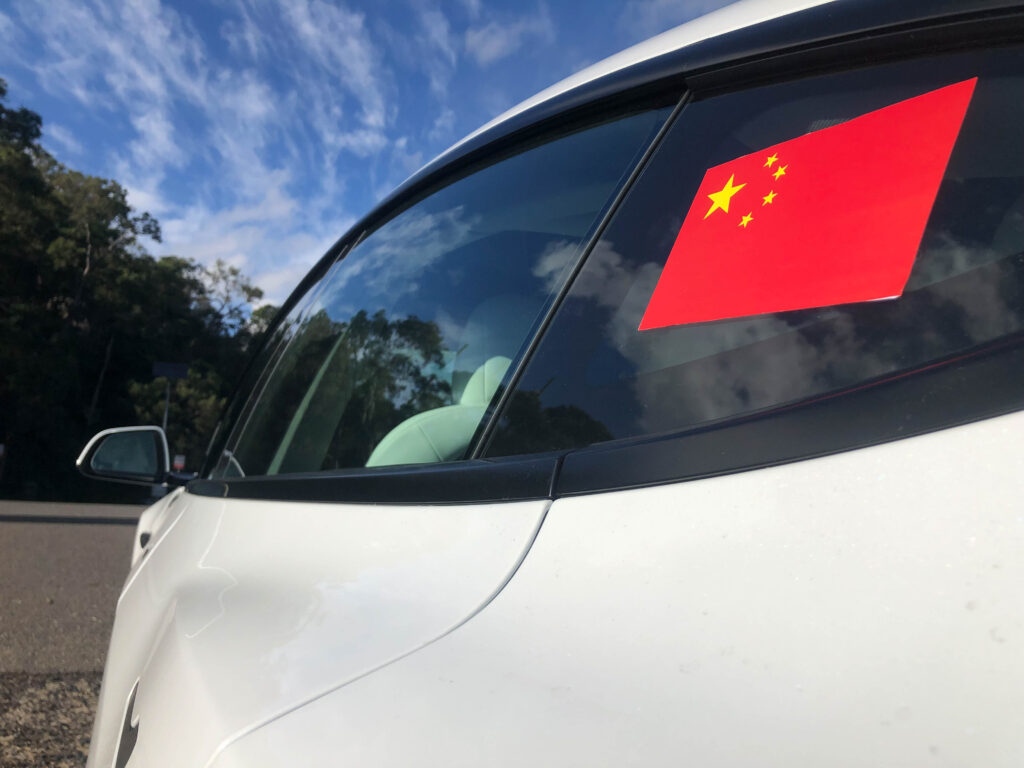
The difference was more pronounced in the 80-120km/h bracket, with the blue car clocking 3.50 seconds versus the white car’s 3.73 seconds.
All of which had us hypothosising about the difference and how it has been achieved.
Shorter gearing would allow for better acceleration at low speeds, but it doesn’t appear Tesla has changed that.
Tesla Model 3 China v America: Performance figures
| Model 3 made in USA (blue car) | Model 3 made in China (white car) | |
| 0-10km/h | 0.54 | 0.50 |
| 0-20km/h | 1.12 | 1.03 |
| 0-30km/h | 1.76 | 1.59 |
| 0-40km/h | 2.27 | 2.13 |
| 0-50km/h | 2.87 | 2.74 |
| 0-60km/h | 3.43 | 3.22 |
| 0-70km/h | 4.04 | 3.77 |
| 0-80km/h | 4.62 | 4.38 |
| 0-90km/h | 5.34 | 5.14 |
| 0-100km/h | 6.13 | 5.99 |
| 60-100km/h | 2.70 | 2.77 |
| 80-120km/h | 3.44 | 3.66 |
Powering up
The more likely scenario is that the battery pack of the Chinese Model 3 can supply more current – and, therefore, more power – to overcome the additional kilos.
It makes sense. One of the advantages of LFP batteries is that they have a higher power density, which means they can release energy faster.
And figures analysed from the onboard data logging suggested the white car was getting more power.: 233kW was the peak whereas the blue car peaked at 216kW.
So why doesn’t it accelerate harder at higher speeds too?
Our best guess is that the additional current can only be supplied in short bursts, tapering off after a few seconds, in much the same way as Porsche’s Taycan limits the brief power peak to a short time.
Hence Tesla can make the cars with LFP batteries feel almost identical to those lighter ones with NCA batteries, at least in most everyday situations.
EV range: How far will they go?
When we started our Model 3 shootout there was a big difference in the forecast range of each car.
The American blue car was suggesting 381km having just been unplugged from its overnight AC charge.
The Chinese white car displayed 417km after the same charging conditions.
Thirty-six kilometres between them, or something approaching 10 percent.
But during the day that gap lowered.
Using UHF radios we were in constant communication and the Model 3s were slowly bridging that gap the further we travelled.
But it was the last 40km of our drive where that convergence was most pronounced.
We put it down to battery preconditioning.
When we entered the destination into the nav of each car was a Supercharger it is a way of letting the car know it’s about to get a big dose of DC electricity.
From the second we did that the China Model 3 notified us it was “Preconditioning for Supercharging”. In other words, it was preparing the temperature of the batteries to optimise them for the fast charging ahead.
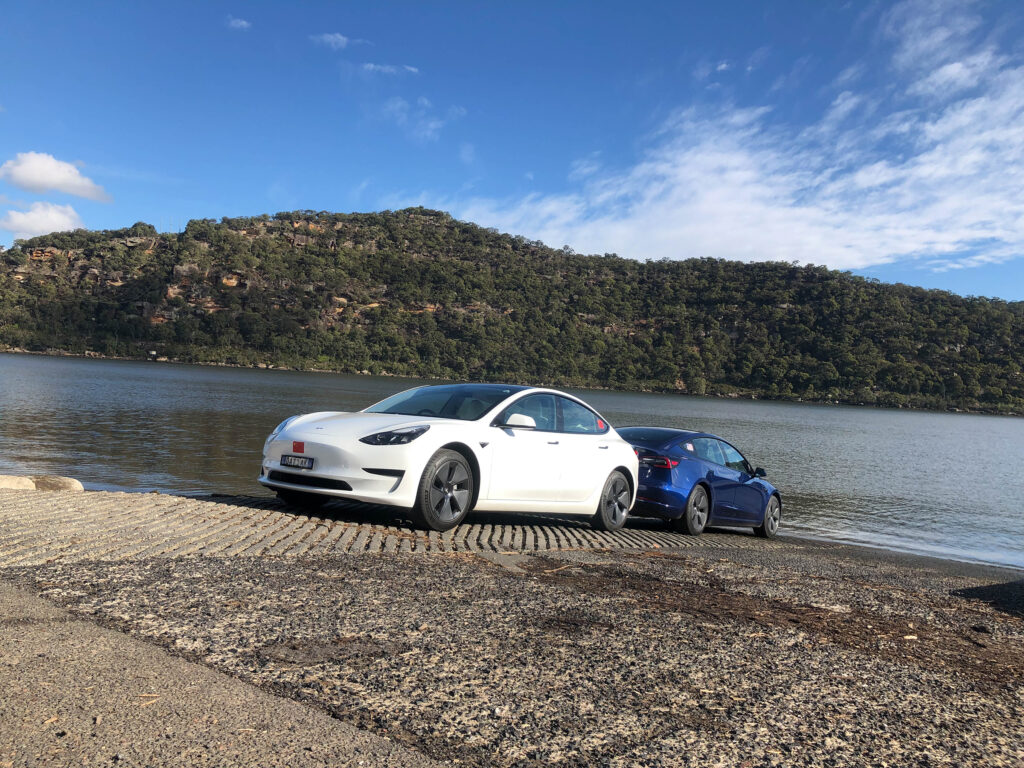
Doing that uses energy and the China car’s estimated range started dropping at a rate of more than one kilometre for every kilometre we drove.
The American Model 3 never went into preconditioning mode, presumably because the onboard computer determined the batteries were at the optimal temperature. Or because the American NCA batteries aren’t as sensitive to temperature changes or were closer to their optimum temp during our testing.
Either way, that made a difference to the forecast range.
By the time we finished our drive each car had identical 9 percent states of charge remaining in the batteries. And each was forecasting the same 36km of remaining range.
So despite the optimism at the start, it appears the China Model 3’s real world range is not much better.
We suspect that it may fare slightly better if you were AC charging rather than Supercharging, in which case the car wouldn’t burn energy getting the batteries to the optimal temperature.
But for our test with Supercharging at the end, there was no discernible difference in EV range.
As for totals, each car did a bit over 258km. That’s way short of the 448km claim for the new Model 3 (previous range claims were higher again) but is partly indicative of the driving we did. Our testing involved about 60km of 110km/h freeway driving and some 100km/h country road cruising, neither of which is kind to an EV. And there was performance testing in the mix, too, which eats through plenty, too.
High efficiency
One of the big things we wanted to learn with the new Model 3 was how efficient it was compared with the previous Model 3, which was consistently one of the most efficient EVs on the market.
Our test treated each cars equally. Same drive mode settings, same drive route (the cars were driven in convoy) and identical performance testing.
The drive route covered suburban Sydney with temperatures starting at 6 degrees and rising to 16 degrees throughout the day. Again, both cars endured identical conditions.
At the end of our drive the blue car claimed to have covered 258.9km and the white car 258.1km.
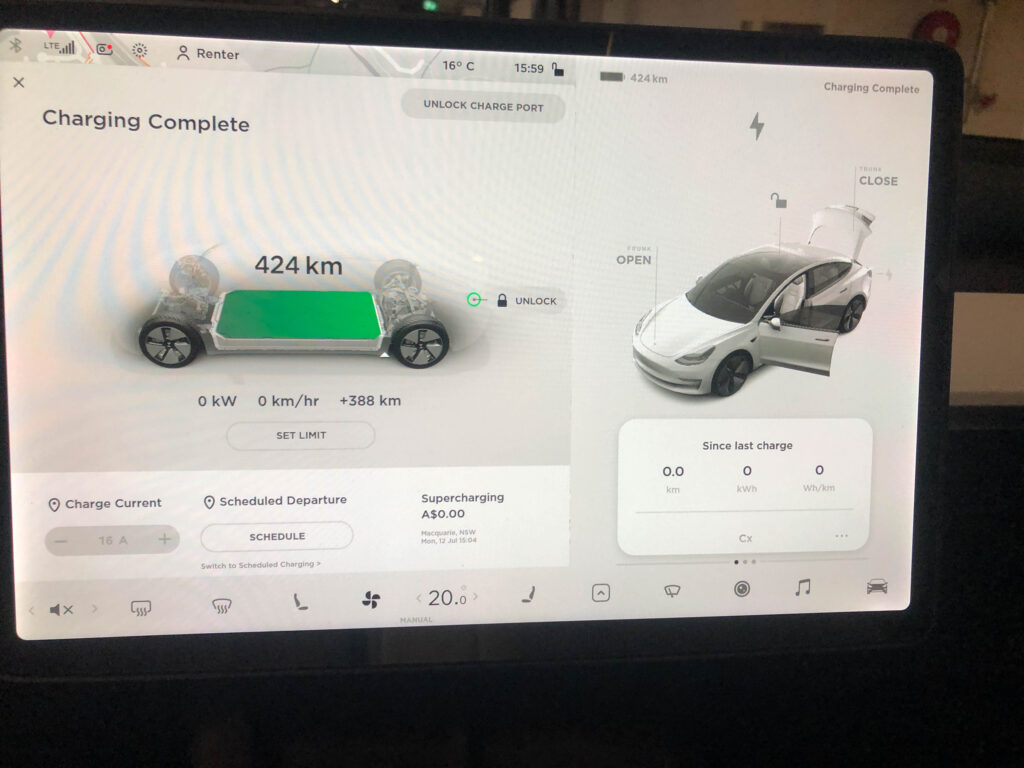
And the blue car was more efficient, almost certainly due to its lighter weight.
It used an average 15.0kWh per 100km according to the onboard trip computer, whereas the white car used 16.0kWh per 100km (a stats summary captured by a data logger suggested 16.4kWh for the blue car and 18.1kWh for the white car).
So the made-in-China Model 3 will cost you more to charge each year – assuming you’re paying for electricity.
We’re talking 6.7 percent more, which isn’t a bad effort given the additional 119kg makes the car 7.4 percent heavier.
To put that in dollar terms, if you covered 15,000km per year and paid 25 cents per kilowatt-hour you’d pay an additional $37.50 to power your (newer) Chinese-made Model 3 during the year. The made-in-America Model 3 should cost about $562.50 per year in electricity, while the made-in-China model would be about $600.
Charging
Our final test involved charging – fast charging. Or, as Tesla calls it, Supercharging.
At our final photo stop we plugged the Macquarie Centre Supercharger into the onboard navigation of each car. Each calculated a 36km trip.
As stated above, by the time we arrived at the destination the state of charge on each car was 9 percent.
So our charging race would also be a fair contest.
Both cars were plugged in at the same time and right from the start the blue America car estimated a 55-minute charge time to full.
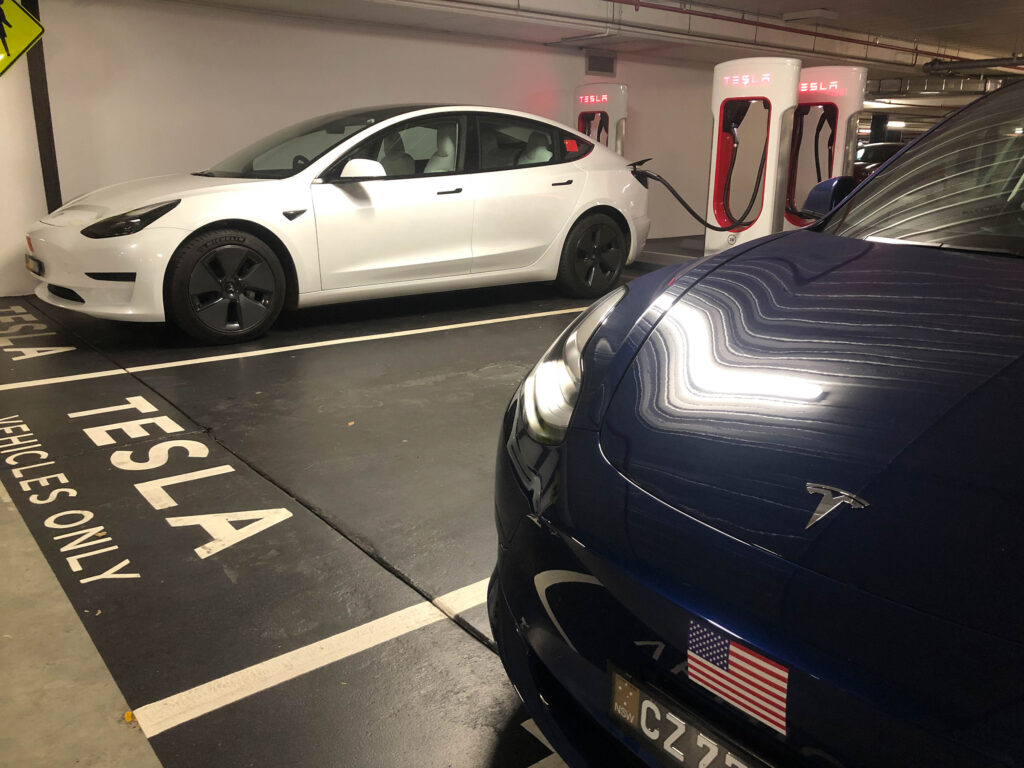
The white car was more pessimistic, estimating 1 hour, 5 minutes till full charge.
From the outset the white China car took on more electricity, quickly peaking at 127kW.
The blue America car took marginally longer to hits its peak, which was lower at 124kW.
For most of the charge the China car maintained a higher charge rate than the America car.
It also periodically ran a noisy under-bonnet fan that was pumping cool air out of the lower grille. The blue America car never ran a fan. Again, perhaps its batteries are less sensitive to temperature changes.
But it was the latter part of the charge where things got weird.
Despite forecasting a 1 hour, 5 minute charge, the China Model 3 was full and display “charging complete” in a little over 53 minutes. It beat its estimation.
A few minutes before that the timer on the blue America car had ticked down to an estimated 10 minutes of remaining charge time, suggesting it would be a close contest. But it was clear the car that had first forecast a win was going to be beaten.
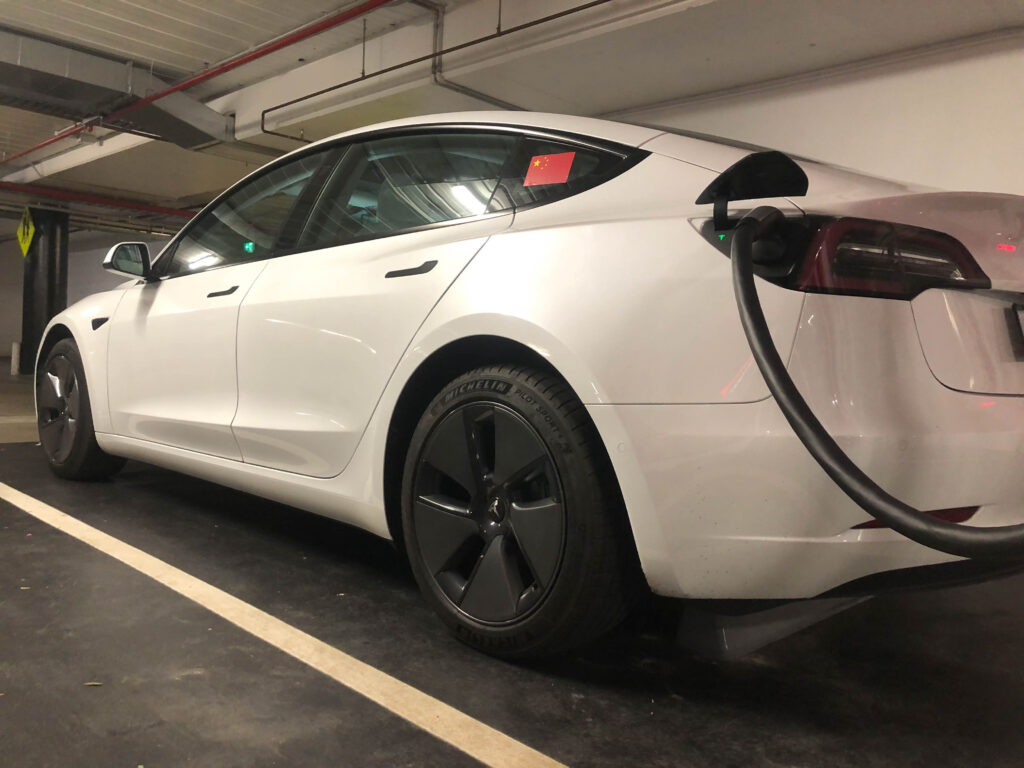
At the 1 hour, 5 minute mark – 10 minutes after its initial 55-minute charging deadline – the blue car got rid of its timer and displayed “calculating”, again suggesting the end of charging was near.
It was almost 34 minutes later that the blue M3 eventually flashed up “charging complete”.
The American Model 3 really struggles to complete its charge. More than anything, it struggles to accurately inform you how long it will take to complete the charge.
So from an estimate of 55 minutes for a full charge the blue America Model 3 took almost twice that time for a total of 1 hour, 39 minutes.
On the same day and in the same conditions using a Supercharger to charge from 9-100 percent the made-in-China Model 3 comfortably won this race, taking half the time to charge.
Battery capacity
Our Tesla charging also allowed us to calculate the battery capacity of each car.
According to Tesla’s Superchargers the blue car took on 44.3kWh and the white car 49.4kWh. The charging graphs below show how each performed; note the longer peak and more gradual drop off from the China Model 3.
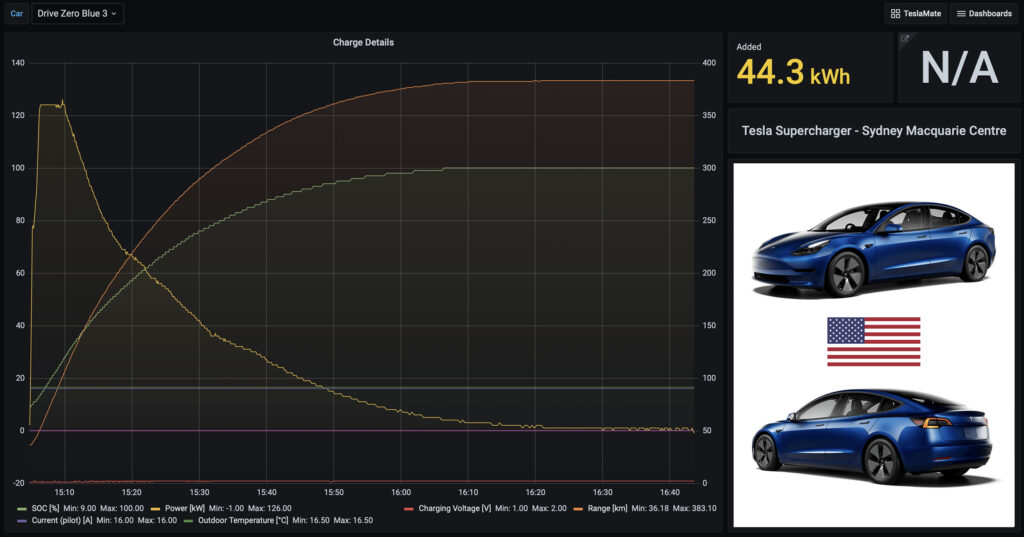
Given each car started with the batteries a nine percent state-of-charge it means we can assume those figures above make up 91 percent of the overall usable battery capacity. Yes, there could be some minor energy losses while charging and there’s the potential for minor scientific error (if one car had 9.0 percent state of charge, for example, and the other 9.4 percent). But we’re confident the assumptions lead us to a relatively accurate indication of battery capacity.
That means the blue US-made Model 3 SR+ has a battery capacity of about 48.7kWh and the white China-made Model 3 SR+ a capacity of 54.3kWh.
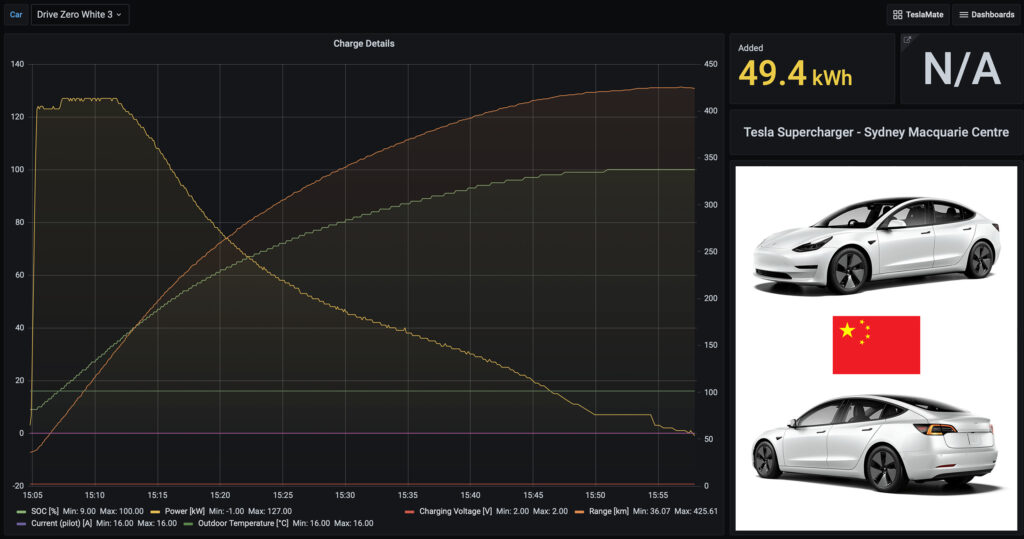
China v America: the verdict
Heavier than its predecessor, the made-in-China Model 3 entered this tussle as the underdog.
Weight typically hurts cars in numerous ways, but the main negative with the additional 119kg was reduced efficiency.
The China Model 3 used 6.7 percent more electricity than the American Model 3.
But for an EV that’s already very efficient, it’s hardly a deal breaker.
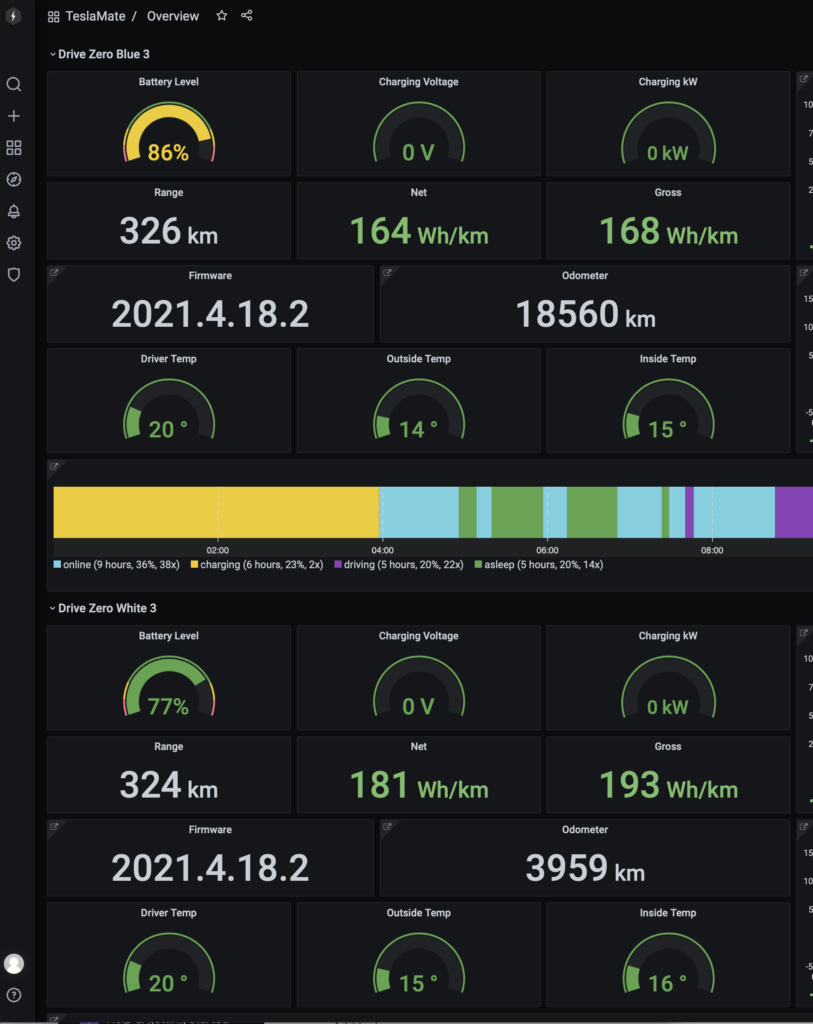
And what our testing has proven is there’s little to worry about in choosing a newer Chinese-made Model 3 versus the older made-in-America Model 3.
Advantages outweigh the negatives.
The China car has almost identical performance, and even accelerates from a standstill with a fraction more enthusiasm.
It has a slightly longer range, at least if you’re AC slow charging (road trips when DC fast charging should yield almost identical ranges).
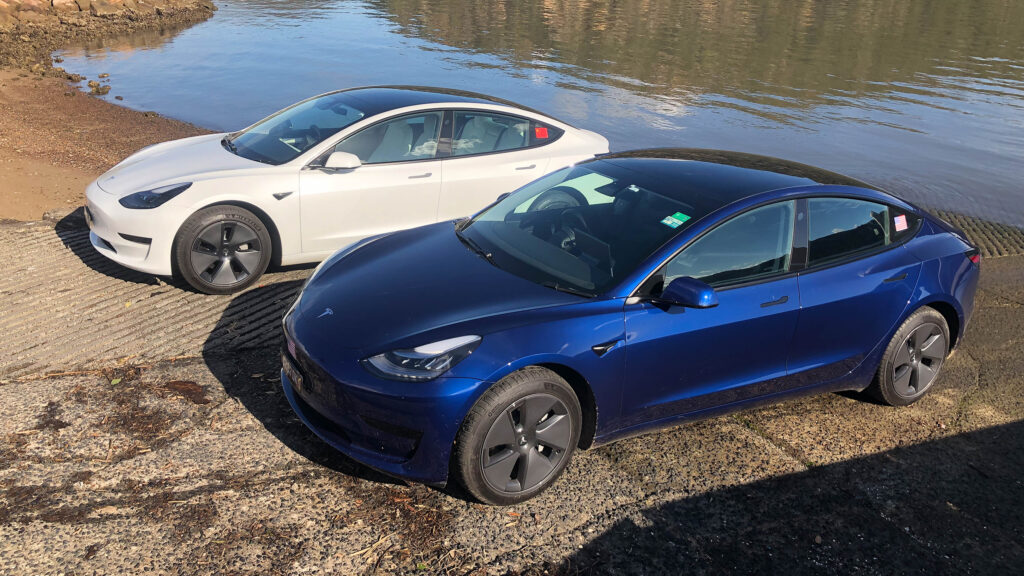
And as a bonus it’s more affordable than the Model 3 has ever been.
For this contest it’s a win to China.
WANT A TEST DRIVE? Rent one of the Tesla’s used in this test from Evee.com.au
| Model 3 SR+ made in USA (blue car) | Model 3 SR+ made in China (white car) | |
| On sale dates | 2019 to early 2021 | From early 2021 |
| Battery capacity (calculated) | 48.7kWh | 54.3kWh |
| Weight | 1614kg | 1733kg |
| Weight distribution | 47% front, 53% rear | 48% front, 52% rear |
| Maximum charging speed on test | 124kW | 127kW |
| 9-100% charging time (Tesla Supercharger) | 1 hour, 39 minutes | 53 minutes |
| Electricity added for 9-100% charge | 44.3kWh | 49.4kWh |
| 0-60km/h | 3.43 seconds | 3.22 seconds |
| 0-100km/h | 6.13 seconds | 5.99 seconds |
| 60-100km/h | 2.70 seconds | 2.77 seconds |
| Peak power delivered on test | 216kW | 233kW |
| Electricity usage on test | 15.0kWh/100km | 16.0kWh/100km |

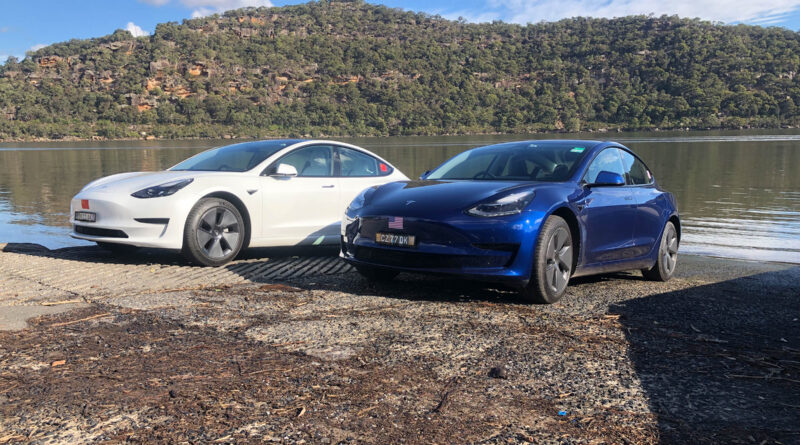

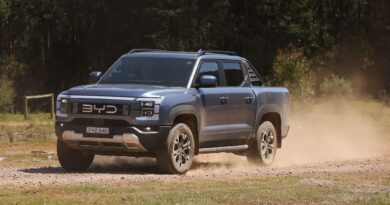
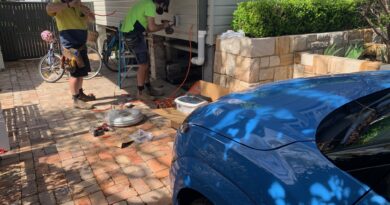
Interesting topic and the most professional piece of motoring journalism/research I have read for years. Thank you.
Hi Toby,
Thanks for the comprehensive comparison. Based on what we have been reading lately, LFP chemistry just might be the preferred choice in batteries for now. Keep up the good EV work.
Excellent article that satisfies “details nerds” and “time -starved, TLDR, knackered-after-a-hard-day-at-work EVthusiast” thanks to the concluding paragraph.
Champagne Journalism, the author will go far.
On a full charge ;0)
A most interesting and detailed analysis of the performance differences between the 2 battery chemistries. I always listen to your ABC radio talkback segment on Thursday nights despite some of the not so intelligent question you are asked. Thankyou Toby